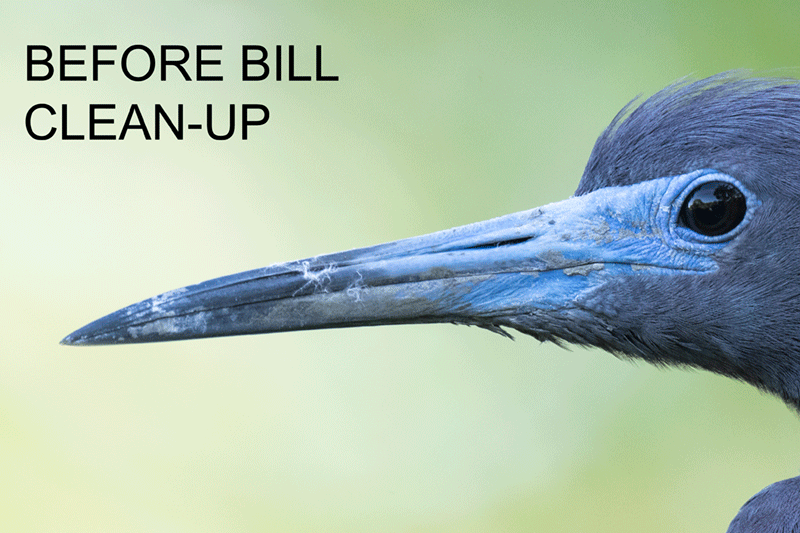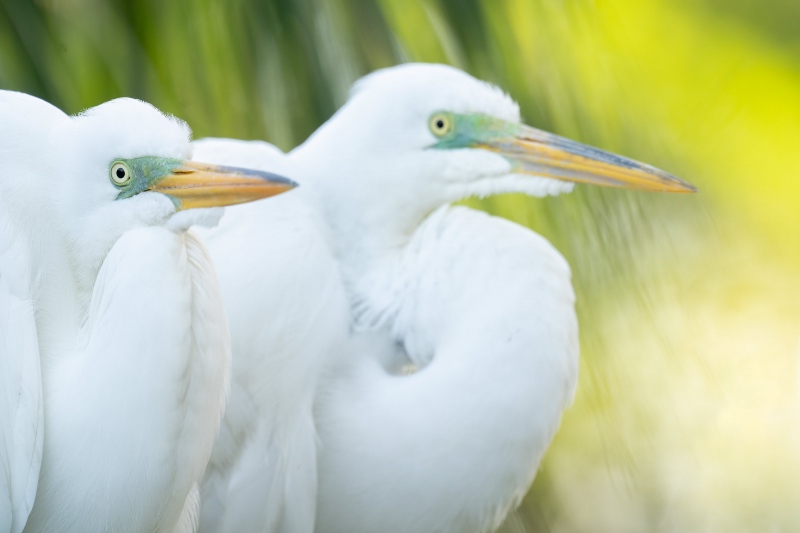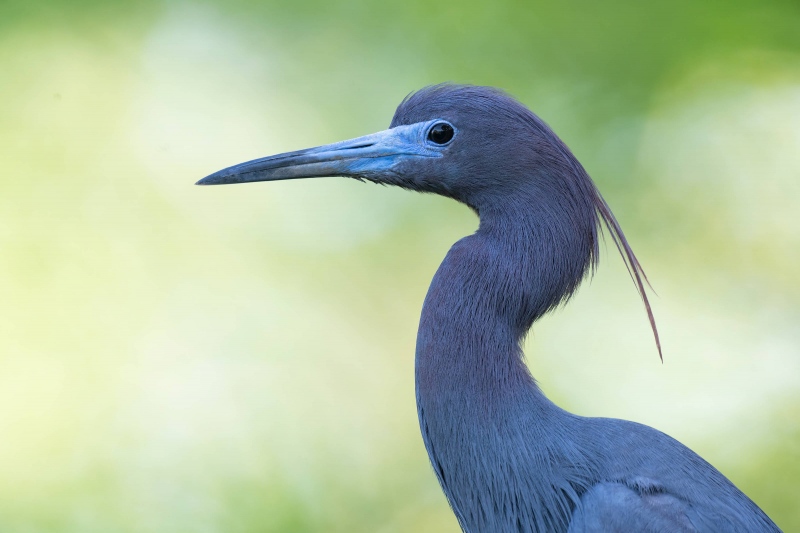Which is the Stronger Image?
Why?
What’s Up?
I felt much better on Saturday morning. When I woke, I was not coughing at all. As the day progressed, I coughed a bit but nothing like the horrific hacking I experienced on Friday. I spent lots of time on the nebulizer. My pulse Ox again ranged from 93 to 96. All in all, things continue to improve.
Today is Sunday 17 April 2022. I am feeling great at 7:24am. We will see how the day progresses. Again, no worries, I will be taking it easy. I will start my edit of the Nikon Z9 Camera User’s Guide that was written by Warren Hatch, an excellent bird photographer who has been using the Z9 since Christmas. Beyond his extensive field experience with the camera, Warren has a unique knowledge of the camera’s capabilities. He decoded the Z9 EXIF information for Nikon. It is available in ExifTool – the preeminent utility for displaying the metadata information embedded in NEF image files. Wherever you are and whatever you are doing, I hope that you too have a great day. This blog post took about 40 minutes to prepare and makes thirty-seven days in a row with a new one.
Please remember to use the B&H and Amazon links that are found on most blog pages and to use the BIRDSASART discount code at checkout when purchasing your new gear from Bedfords. Please, also, consider joining a BAA IPT. You will be amazed at how much you will learn!
BIRDS AS ART Image Optimization Service (BAA IOS)
Send a PayPal for $62.00 to birdsasart@verizon.net or call Jim at 863-692-0906 and put $62.00 on your credit card. Pick one of your best images and upload the raw file using a large file sending service like Hightail or DropBox and then send me the link via e-mail. I will download and save your raw file, evaluate the exposure and sharpness, and optimize the image as if it were my own after converting the raw file in Adobe Camera Raw. Best of all, I will make a screen recording of the entire process and send you a link to the video to download, save and study.
|
|
|
This image was created on 13 April 2022 at the St. Augustine Alligator Farm. I used the no-longer available Induro GIT304L Stealth Carbon Fiber Tripod/Levered-Clamp FlexShooter Pro-mounted-Sony FE 600mm f/4 GM OSS lens, the Sony FE 2.0x Teleconverter, and The One, the Sony Alpha 1 Mirrorless Digital Camera). the exposure was determined via Zebras technology with ISO on the Thumb Dial. ISO 1600. 1/160 sec. at f/8 (wide open) in Manual mode. The raw file brightness was perfect when evaluated in RawDigger. AWB at 8:35:32am in the shade on a mostly sunny morning. Tracking: Spot S AF-C with Bird Face/Eye detection enabled performed to perfection. Be sure to click on the image to enjoy a high-res version. Image #1: Great Egrets at their under-construction nest |
St. Augustine Alligator Farm (SAAF) Photo Pass INFO (and my comments)
You can find all the details on the St. Augustine Alligator Farm Photo Pass here. If you plan on going this season, please read everything carefully. Here are the highlights along with my comments.
There are two types of SAAF photo passes, an Annual Photo Pass for $119.95 and a 2-Day Photo Pass for $74.95. The latter is good only on two consecutive days. The former is an amazing value. It gets you in early every single day from February 26 – June 26, 2022. The extended hours benefits include early entry at 8 am and weather-dependent late-stay until sunset. The length of the season is exceedingly generous and the daily entry with late stay is astounding. Compare those with Gatorland in Kissimmee where there are only ten days to the season with no late stay and you can see where I am coming from.
The only advantage to the Gatorland Pass is that you can enter at 7:00am rather than 8:00am. Standing on the line by the red door for 45 minutes at St. Augustine knowing that the sun rose before 7:00am and that the golden light is shining on the birds to the left of the long boardwalk is pure agony, at least for me. If they opened the doors at seven, they would have things perfected. I’d gladly pay a substantially increased price that included 7:00am entry. Hey, a guy can dream, can’t he?
As for conditions at both places this year, there are probably ten times as many nests at SAAF this year than at GL. As you have seen on the blog, there have been some very accessible Great Egret nests with small chicks at GL. As far as potential for the rest of the season, I believe that SAAF has a huge edge. Do understand that creating good photographs is a very difficult thing to do at both places. I wouldn’t mind spending a week at St. Augustine in early May …
I forgot to mention that you do not need to get a pass in advance. Show up, get on the line, and hand over your driver’s license and a credit card to the staff member at the gate and pick up your pass in the gift shop on your way out. Be sure to specify Annual or Two Day. And have fun.
If you live near either place, getting an Annual Pass is surely the way to go. If you will be coming from out of state, the Alligator Farm Annual Pass would make St. Augustine the obvious choice with daily extended entry, late stay, and lots of birds.
|
|
|
This image was also created on 13 April 2022 at the St. Augustine Alligator Farm. Again, I used the no-longer available Induro GIT304L Stealth Carbon Fiber Tripod/Levered-Clamp FlexShooter Pro-mounted-Sony FE 600mm f/4 GM OSS lens, the Sony FE 2.0x Teleconverter, and The One, the Sony Alpha 1 Mirrorless Digital Camera). the exposure was determined via Zebras technology with ISO on the Thumb Dial. ISO 1600. 1/125 sec. at f/8 (wide open) in Manual mode. The raw file brightness was about 1/6 stop too dark when evaluated in RawDigger. AWB at 8:47:13am in the shade on a mostly sunny morning. Tracking: Spot S AF-C with Bird Face/Eye detection enabled performed to perfection. Be sure to click on the image to enjoy a high-res version. Image #2: Little Blue Heron in breeding plumage |
Tips on Making Good Images at SAAF in the Morning
As I have written a thousand times, rookeries are cluttered places. It is easy to make several thousand bad images in a single session without even trying. Whenever you are working at a rookery, you will do best by moving almost constantly, by being on the lookout for momentarily good situations, and by looking for clear shooting slots to a nest or a perched bird. Longer focal lengths will enable you to better isolate a bird or a nest. On sunny days, working wide and/or off sun angle will yield images with lots of harsh, unpleasant shadows. As it was sunny when I visited, I went to the 600 lens with a 2X teleconverter and only photographed birds in the shade. Those were often very gently backlit. On sunny mornings, the birds, and the nests on the right side of the boardwalk for the first sixty yards, are shaded for well more than an hour.
On sunny mornings with any decent wind from the south or the east, standing on the ramp with either a hand held or a tripod-mounted a flight lens can pay dividends. In retrospect, I should have tried that on my last visit, but I was in a hurry to get home and discover that I had COVID 🙂

|
The Image Clean-up
The habitat is not the only messy thing at the wading bird rookeries (especially after the chicks hatch). The beautiful breeding plumages of the adults is often spoiled by regurgitant, fish scales, goo, poop, and pretended body feathers. And the chicks, pristine at hatching, usually wind up an even worse mess. The bird in Image #2 was quite handsome but its bill had seen better days. I knew that to execute a successful clean-up I would need to work large, work slowly, and work carefully. So I did. I used my usual cadre of clean-up tools and techniques — the Spot Healing Brush, the Patch Tool, Content-Aware Fill, the Clone Stamp Tool, Divide and Conquer, and a series of small Quick Masks refined by Regular Layer Masks. Lastly, I used Select/Color Range to select the lightest tones on the base of the bill. I just those on their own layer and ran a Linear Burn at 30%.
I love the clean-up job — it took about 25 minutes in all. I also loved the clean plumage, the perfect head angle — about 1° toward us, the breeding plumes, and the un-cropped image design.
|
|
The BIRDS AS ART Current Workflow e-Guide (Digital Basics II).You can order your copy from the BAA Online Store here, by sending a PayPal for $40 here, or by calling Jim or Jennifer weekdays at 863-692-0906 with your credit card in hand. Be sure to specify Digital Basics II. |
The BIRDS AS ART Current Workflow e-Guide (Digital Basics II)
The tools and techniques mentioned above and tons more great Photoshop tips and techniques — along with all of my personalized Keyboard Shortcuts — are covered in detail in the BIRDS AS ART Current Workflow e-Guide (Digital Basics II), an instructional PDF that is sent via e-mail. Learn more and check out the free excerpt in the blog post here. While the new e-Guide reflects my MacBook Pro/Photo Mechanic/DPP 4/Photoshop workflow, folks using a PC and/or BreezeBrowser will also benefit greatly by studying the material on DB II. Note: folks working on a PC and/or those who do not want to miss anything Photoshop may wish to purchase the original Digital Basics along with DB II while saving $15 by clicking here to buy the DB Bundle.
Folks who learn well by following along rather than by reading can check out the complete collection of MP 4 Photoshop Tutorial Videos by clicking here. Note: all the videos are now priced at an amazingly low $5.00 each.
You can learn how and why I converted all of my Canon digital RAW files in DPP 4 in the DPP 4 RAW Conversion Guide here. More recently, I became proficient at converting my Nikon RAW (NEF) files in Adobe Camera Raw. About three years ago I began converting my Nikon and Sony RAW files in Capture One and did that for two years. You can learn more about Capture One in the Capture One Pro 12 Simplified MP4 Video here. The next step would be to get a copy of Arash Hazeghi’s “The Nikon Photographers’ Guide to Phase One Capture One Pro e-Guide” in the blog post here.
You can learn advanced Quick Masking and advanced Layer Masking techniques in APTATS I & II. You can save $15 by purchasing the pair.
Typos
With all blog posts, feel free to e-mail or to leave a comment regarding any typos or errors.

















Grouse started out well then it has gone backwards due to weather hope for change this week. On a positive lots of Grouse. Actually too many on one lek thirty five males.
Chag Sameach Art! So sorry that you contracted Covid though it appears you’re on the mend and hopefully this plague will soon pass. Being fit and following the imask+ protocol is wise. I hope you recover quickly and without sequelae.
I find the second image more powerful for several reasons including the head angle, beak in focus, clean background, and more pleasing bokeh…
Thanks, Adam. It could very well be the best thing that ever happened. And yes, I am doing my best to avoid a sequel 🙂
with love, artie
Good morning Artie glad your feeling better. For me the Little Blue Heron as the light is more softly diffused in the background. Great perfect Ha. The great egrets background is somewhat blurred and distracting and we don’t have much of the egret that is in focus in the frame. Also love all the detail in the feathers on the Little Blue Heron.
Thanks, Kevin. Are the grouses grousing well?
with love, artie